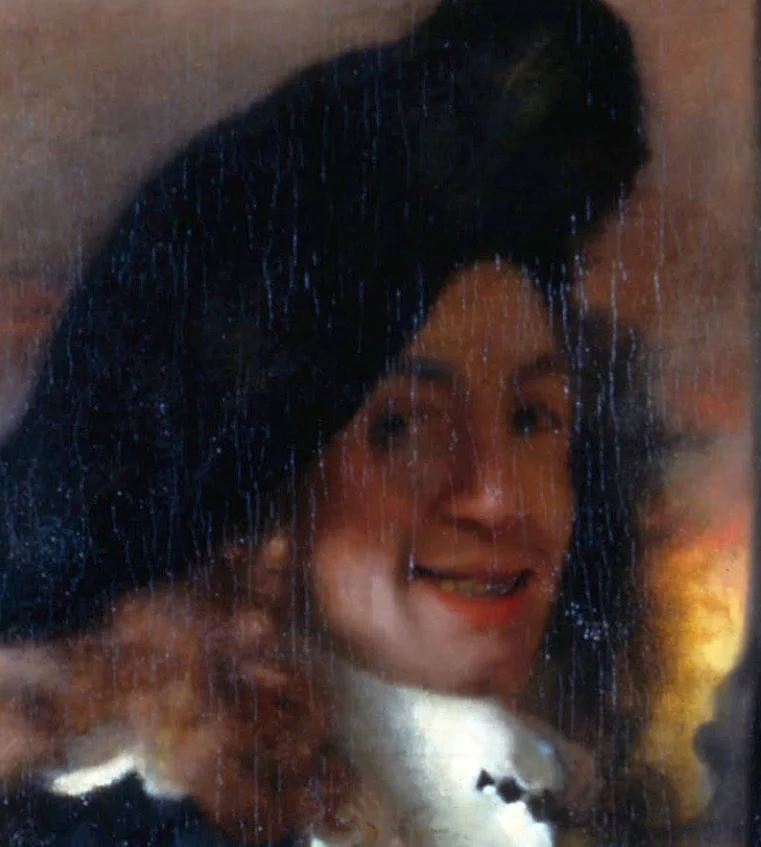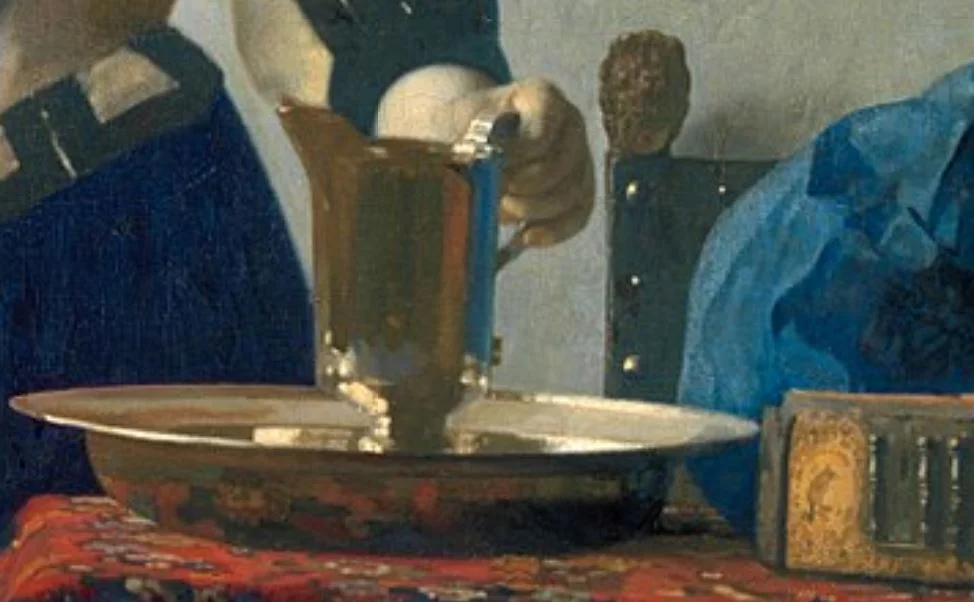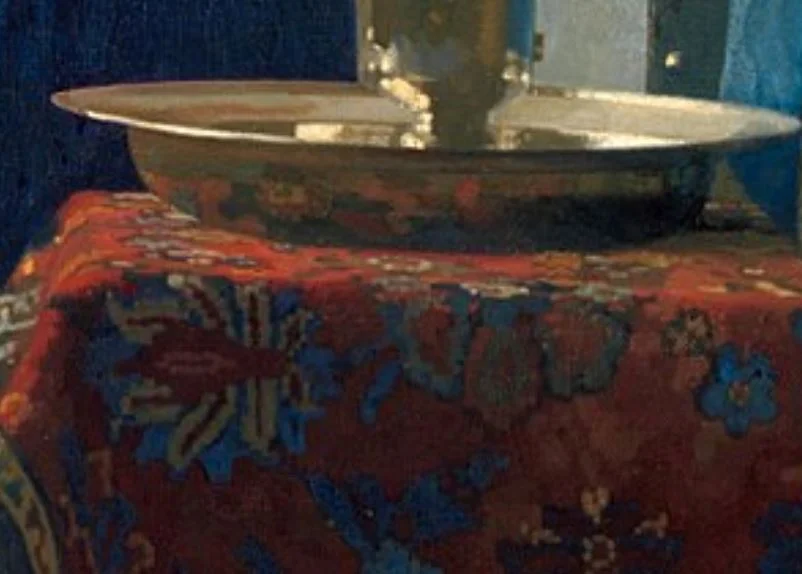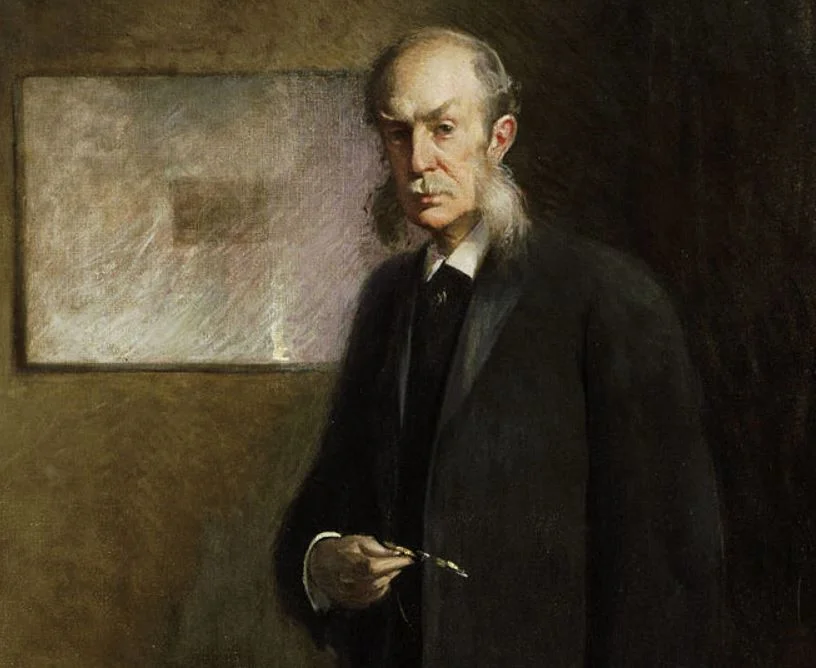If you’re interested in delicate works of art that depict random household scenes from the 17th century, the oeuvre of famous Dutch Baroque artist Johannes Vermeer (1632-1675) will certainly appeal to you.
Let’s take a closer look at some of the most interesting facts about “Woman With a Water Jug,” one of these paintings that you’ll appreciate more the longer you look at it (and that’s quite literally the essence of a masterpiece).
1. It was painted in the early 1660s
Johannes Vermeer, often abbreviated to “Jan Vermeer,” was a Dutch painter who lived in the so-called “Dutch Golden Age,” a period in time in which the Netherlands was the center of advances in multiple fields. This period is often referred to as the “Dutch Miracle” as well.
His hometown was Delft and this is where he painted just about all of his 50 paintings, mostly within his own home. This is one of just 34 of his works that have survived.
He only dated 3 of his surviving works, The Procuress (1656), The Astronomer (1668), and The Geographer (1669), which means that it’s not always exactly sure when he completed some of his works.
It’s assumed that this work was completed between 1660 and 1662 while the artist was in his late-20’s.

2. It’s one of multiple similar works by the artist
Most of the paintings of this Dutch Master depict household scenes, often portraying women while they are doing household chores. Woman with a Water Jug is one of the multiple similar paintings he created in the early to mid-1660s.
Other famous works are “The Milkmaid,” a delicate work of a woman who is pouring milk, and “The Lacemaker,” a painting of an ultra-focused woman while she is doing her job.
This particular painting depicts a woman as she is opening a window and prepares to pour water from a water jug, presumably to wash her hands at the end of her morning toilette.

3. It’s a pretty small work of art

Vermeer didn’t create enormous works of art featuring incredible allegorical scenes from mythology such as his colleagues of the Baroque era often did. Instead, he created delicate works of art that depict a snapshot of domestic life in the Netherlands in the 17th century.
This also means that his works are all relatively small, including this one which has dimensions of just 45.7 × 40.6 centimeters (18.0 × 16.0 inches).

4. It depicts either Vermeer’s wife or his daughter
So who is the woman depicted in Woman with a Water Jug?
This remains a mystery, mainly because she wears a headdress and her face was painted rather blurry. We do assume that the depicted woman is either his wife Catharine or his eldest daughter Maria.
The latter bore a striking resemblance to her mother and is also assumed to be the girl portrayed in both “The Art of Painting” and “Girl With a Pearl Earring,” both considered to be some of the artist’s ultimate masterpieces.

5. The depicted woman is unique in a couple of ways
The blurry face of the woman isn’t the only time Vermeer depicted a woman doing a household chore like this. What makes this painting unique is that the woman is depicted slightly smiling and in a sort of dreamy state.
Most of the women painted by Vermeer were completely absorbed with their task, but not this young woman, something clearly seen in for example The Lacemaker painting.
This means that the artist intended to depict an idealized scene of domesticated life, an ideal woman in an ideal contemporary household.

The details in Vermeer’s paintings often have a lot to tell, and that’s not different in Woman with a Water Jug. The idea of an idealized scene of the perfect household is further emphasized by the objects depicted in the painting.
These include:
- A red rug on the table of Asian origin, not found in common households.
- A jewelry box on the edge of the table, stressing the fact that she has a lot of material possessions.
- A gilded pitcher and platter, a unique object at the time that presumably belonged to Vermeer’s mother-in-law.
All of these elements were included by Vermeer to emphasize the fact that the depicted woman came from a rich background, presumably either a wealthy middle-class or even upper-class family.

7. The map on the wall depicts the Netherlands at the time
A recurring feature in the paintings of Johannes Vermeer is a map depicting the Netherlands at the time. This isn’t surprising because the country was extremely wealthy at the time and the center of technological advancements.
The artist was clearly incredibly proud to be Dutch and emphasized that by painting this common decoration in the 17th century on the wall.
The pride that he had for his unified country also caused his demise as he died in his early 40s, just 3 years after the so-called “Rampjaar” or “Disaster Year” in 1672 and the outbreak of the Dutch-Franco War.

8. The artist displays his mastery of light with reflections
Apart from the level of detail that Vermeer put into his works, he was also a master of using light. Even though the light source coming from the left isn’t as strong as in some of his other works, we can still see his mastery in some of the object’s reflections.
The blue dress worn by the woman is reflected as dark blue on the pitcher, and the red rug creates a fascinating hue on the gilded platter standing on the table.

9. It was the first Vermeer in America after being bought for $800
Perhaps one of the most remarkable facts about Woman with a Water Jug is that it ended up becoming the first Johannes Vermeer painting in the United States.
The artist wasn’t as famous in the 19th century as he is today because his works were only being rediscovered back then. American philanthropist and art collector Henry Gurdon Marquand (1819-1902) only had to pay $800 in 1887 at a Paris art gallery to acquire the work.

10. The painting is on display in a famous museum in New York
This work, along with countless others in Marquand’s collection, eventually ended up being donated to the Metropolitan Museum of Art in New York City in 1889.
If you want to admire one of Vermeer’s masterpieces, then this is where you have to go as it’s still on public display at one of New York’s most famous museums today!

